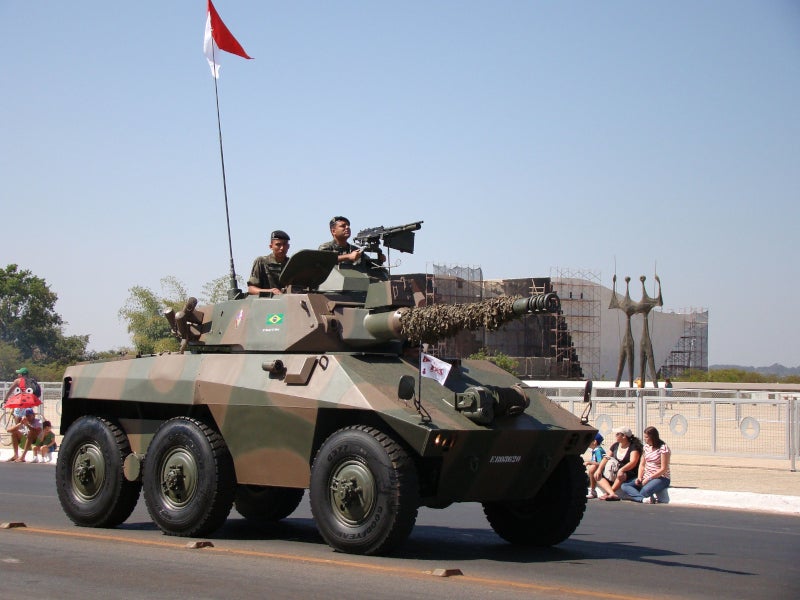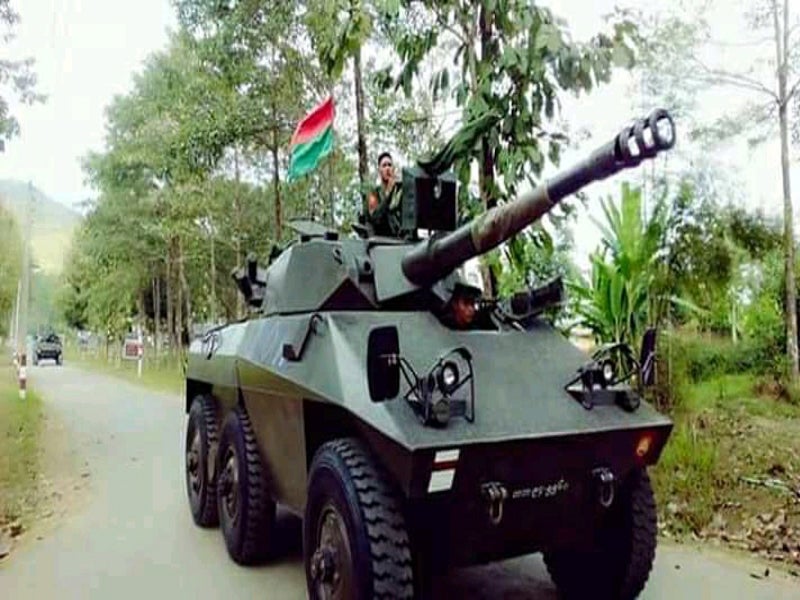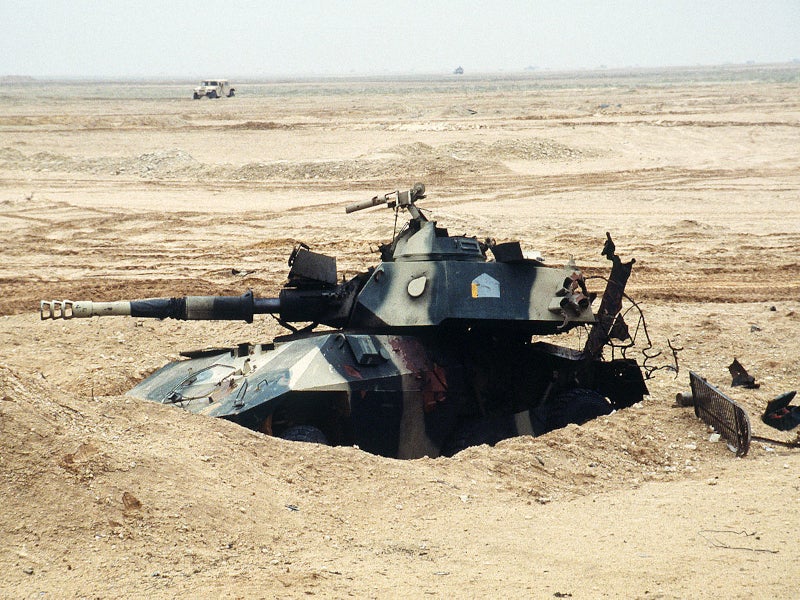The EE-9 Cascavel armoured reconnaissance vehicles fleet is being modernised into Novo Cascavel by the Brazilian army to improve its firepower, situational awareness, command and control and mobility.
In July 2022, the Brazilian army’s Manufacturing Directorate signed a contract worth BRL74.6m ($15.2m) with the Força Terrestre Companies consortium under the Cascavel New Generation Programme to transform a minimum of 98 and up to 201 EE-9 Cascavel vehicles into modern equipment over a period of eight years. The consortium comprises Akaer, a defence company, Universal Engenharia, an engineering company and Opto Space and Defence, a defence optical products manufacturer.
The consortium developed two prototypes and a pilot batch of seven ENGESA EE-9 Cascavel M VII 6×6 armoured reconnaissance vehicles by July 2023.
The first prototype developed by Akaer primarily incorporates new powertrain components. The other modernised vehicles with advanced optronics and anti-tank missile capability are expected to be launched in December 2023 and July 2024, respectively.
Akaer will deliver a prototype to the Army Evaluations Center (CAEx) for evaluation in January 2024.
EE-9 Cascavel modernisation details
EE-9 Cascavel will be modernised with a new engine and firing control system along with a ballistic computer.
The existing mechanical turret of the commander will be replaced with a new automated turret, optimising the firing position and improving situational awareness. The vehicle will feature an electronic turret rotation system, which can be controlled by the commander. An anti-tank missile launcher will be integrated into the main turret.
The command and control system will have interoperability with the systems used in the various versions of the vehicles within the Guarani programme. The system will continuously analyse all the vehicle’s sensors in real time to detect environmental parameters that could potentially disrupt the execution of its missions.
In addition, the electro-optical systems will be modernised. The optical sights of the vehicle will be replaced with state-of-the-art optronic sights, offering a new search and aiming capability, along with identification of threat and target acquisition capability.
The vehicle suspension will be resized and revitalised to improve its mobility. Complete air conditioning will be installed to improve the operating environment for the crew.
No modification is expected in the ballistic protection level of the vehicle, however.
Engine features
The chassis of the vehicle was remodelled to accommodate a new MWM Acteon 6.12 TCE diesel engine of 225hp in the first prototype. The engine is coupled to an Allison 3000 Series 6+1 automatic transmission.
EE-9 Cascavel details
The EE-9 Cascavel is a 6×6 armoured car developed by Engesa, a former Brazilian defence company, for reconnaissance and as a replacement for Brazil’s ageing M8 Greyhounds fleet.
The vehicle can accommodate three crew members, including a driver, gunner and commander. It features a 90mm cannon as the main armament.
It is equipped with a water-cooled six-cylinder Detroit Diesel 6V-53N engine, which is coupled to an Allison MT643 automatic transmission and produces 212hp at 2,800rpm.
The vehicle can travel at a maximum speed of 100km/h and has a range of more than 800km.
It is currently in service with the armed forces of more than 20 South American, African and Middle Eastern countries such as Iraq, Libya, Qatar, Iran, Peru, Myanmar and Ecuador.
EE-9 Cascavel variants
EE-9 Cascavel is available in several variants, including the Cascavel Mk I, also known as Cascavel Magro, which has a small turret ring.
Cascavel Mk II, also called Cascavel Gordo, has a broad turret ring. It is an export model that entered service with Qatar, Bolivia, the Sahrawi Arab Democratic Republic and Libya.
Other models include Cascavel Mk III, Cascavel Mk IV, Cascavel Mk V, Cascavel Mk VI and Cascavel Mk VII.






